Next-generation minimalistic and premium CMF
Originating from Sweden, Volvo is a renowned automotive brand recognized for its high safety performance and refined exterior and interior designs. In CMF design, it is highly acclaimed for its elegant, modern, and high-quality expressions. Last year, the EX30, introduced as the smallest BEV SUV in the brand’s history, also attracted attention as a highly design-driven model equipped with human-centered technology and enhanced sustainability.
The CMF design evokes a Scandinavian ambiance rooted in its homeland of Sweden, composed of highly expressive colors and materials. What stands out in this vehicle is its contribution to the interior space through sustainable design and its pioneering approaches in innovative material expressions. Where does such a highly polished CMF design, one that tells a story and resonates with human emotions, come from? In this report, I will explore the EX30 from the perspective of CMF design.

Exterior Color / Moss Yellow (named after the image of yellow moss found in Scandinavia)
Basic Interior Color / Black
Seat Upholstery / Fabric (30% wool blend, 70% recycled yarn)
Trim Material / “Flax Deco” (mixed with flax fibers)

“Breeze”
Exterior Color / Cloud Blue
Basic Interior Color / Black
Seat Upholstery / Pixel Knit × Nordico (synthetic leather)
Trim Material / “Particle Deco” (recycled materials)
In its home country of Sweden, the Volvo EX-30 is available in four different grades, but currently, only two grades, “Mist” and “Breeze,” are available in Japan. Both evoke themes inspired by the landscapes and nature of Scandinavia.
1. A refreshing sense of comfort
The first impression I got from the CMF of these two models was their refreshing and harmonious appearance, both in exterior and interior design.
As you notice the exterior color and step into the car, there’s a calming, pleasant air to the interior.
The body color, interior color, and the selection of materials, along with their visual and tactile treatments, are all perfectly coordinated, creating a visually soothing and beautifully arranged atmosphere. It evokes images of Scandinavian nature—cool yet warm, a sense of natural beauty. At the same time, it carries a modern design sensibility, almost like interacting with an advanced device.

A refined interior space featuring black with a sophisticated light gray as the base tone. The neatly tailored tweed-style fabric seats and trim panels made from natural flax fibers create an impression of calm and comfort.
As you take a closer look at the interior, you can observe the meticulous color and material coordination, eliminating any sense of discord and offering a color scheme that is easy on the eyes. Similarly, it’s evident that great care has been taken with the selection and placement of materials, just as with the colors.
Specifically, the color palette appears to be composed of just two main colors: the basic black interior and the colors used on the seats and trim panels. Of course, strictly speaking, the materials and surface finishes differ depending on the parts, but the consistent control of color and sheen ensures there is no visual discord, maintaining a high level of refinement throughout.

A combination of black and understated light blue creates a cool, refreshing impression. The cool ambiance sharpens the interior, giving off a sporty and invigorating feel.
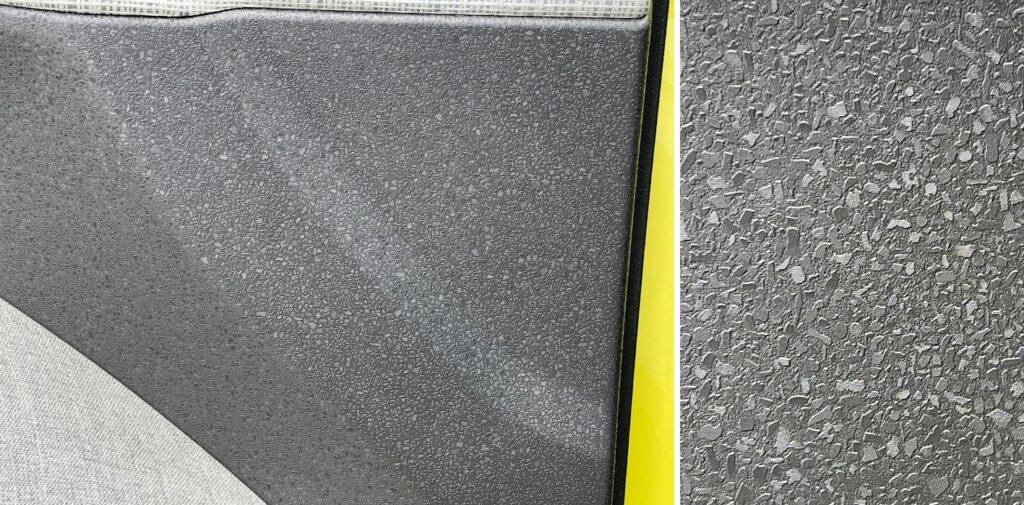
Each grain has a sense of movement, with a well-balanced sheen. While retaining its presence, it steps back to highlight the colors and materials of the adjacent areas.
2. A sense of minimalistic unity throughout the vehicle
Another aspect that resonated with me was the sense of beautiful minimalism in the design. This stems from the effective reduction of interior components.
This vehicle consolidates operational controls, such as switches, into the center section. For example, the speakers, which are traditionally placed in the door panels, have been relocated to the instrument panel, reducing the complexity of the door panel wiring and creating a more spacious feel at the footwell. Additionally, by centralizing the window switches in the center console, the door panels themselves are designed with a clean, streamlined structure, free from unnecessary lines or protrusions.
By effectively unifying components in this way, the CMF design also becomes more minimalistic, allowing the colors and surface finishes to truly stand out. This is a crucial aspect of the design.

Speakers are built into the instrument panel (IP) near the front windshield, covered by the surface material, functioning as a “soundbar.” By relocating the speakers, which were traditionally placed in the doors, to the back of the instrument panel, the design flexibility of the door trims increases, enhancing usability. At the same time, this also contributes to cost reductions in the development and production processes.

Not only are there no speakers, but there are also no window switches or any other controls on the door. The relationship between color, material (and texture) is clear, and the shape is neatly contained. This increases the design freedom, enhances usability, and improves the spaciousness around the footwell.
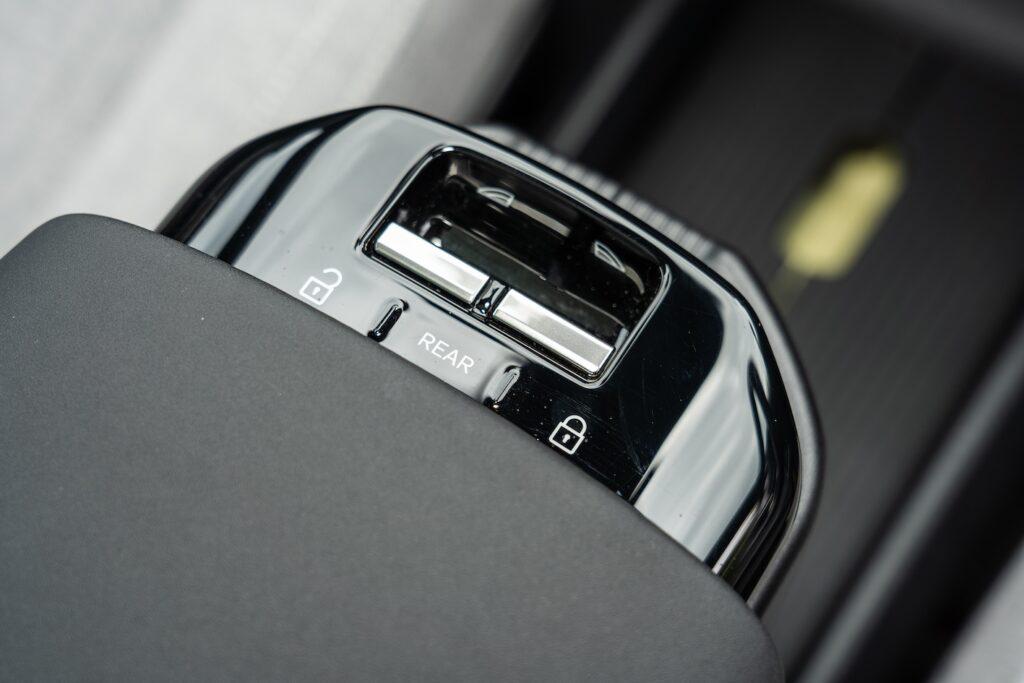

3. On Sustainable Materials: The Changing Definition of “Premium”
In the EX30, Volvo is aiming for “circular” sustainability by experimenting with unique and beautiful sustainable materials. These materials suggest new possibilities for expressing what “premium” can mean in the modern context.
In particular, the decorative panels in both “Mist” and “Breeze” feature materials derived from nature, such as flax deco, or made from recycled plastic, like particle deco. These panels exhibit a rich and expressive appearance, quite different from the uniform look typical of mass-produced elements.
In a clean, high-tech vehicle like an EV, seeking too much uniformity in the finish can result in a sterile, impersonal atmosphere. However, with these natural, high-quality material expressions that resonate with human sensibilities, the EX30 introduces a new form of “premium” that provides a satisfying and comfortable experience.

Made by finely shredding plant-based flax into fibers and combining it with resin. The texture is soft and smooth to the touch, with the naturally random flow of the material giving it an elegant appearance.
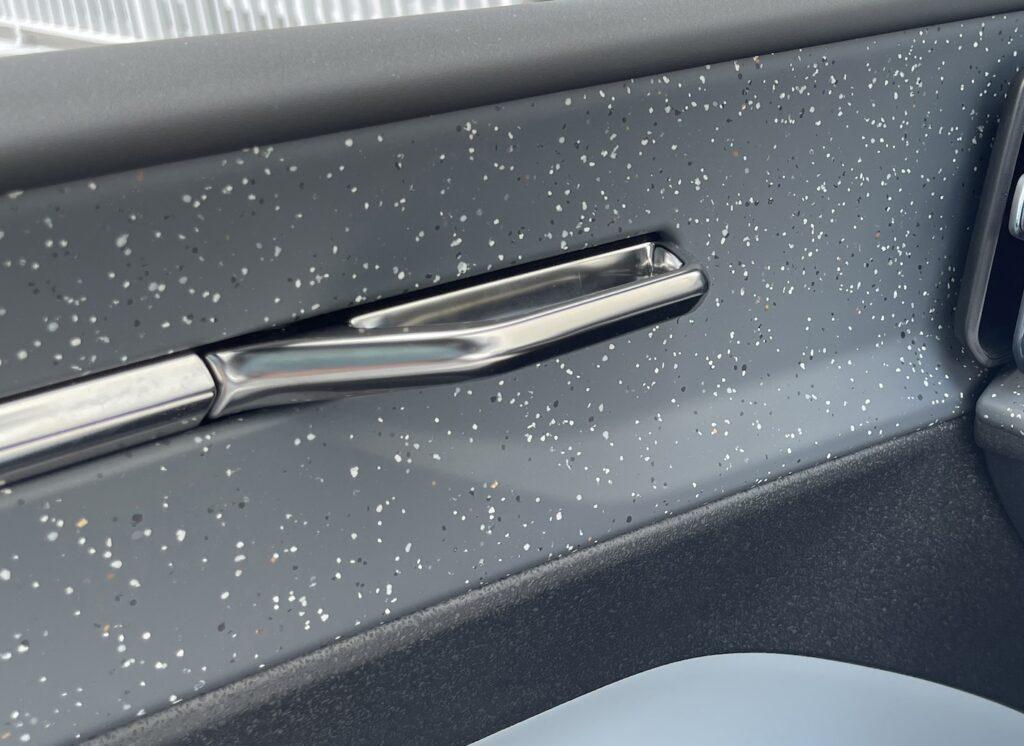
Made from crushed resin waste, such as household PVC window frames, it is designed with the image of a Scandinavian starry sky in mind.

A mixed fabric made of 30% wool and 70% recycled yarn. It has a smooth texture with a moderate firmness.
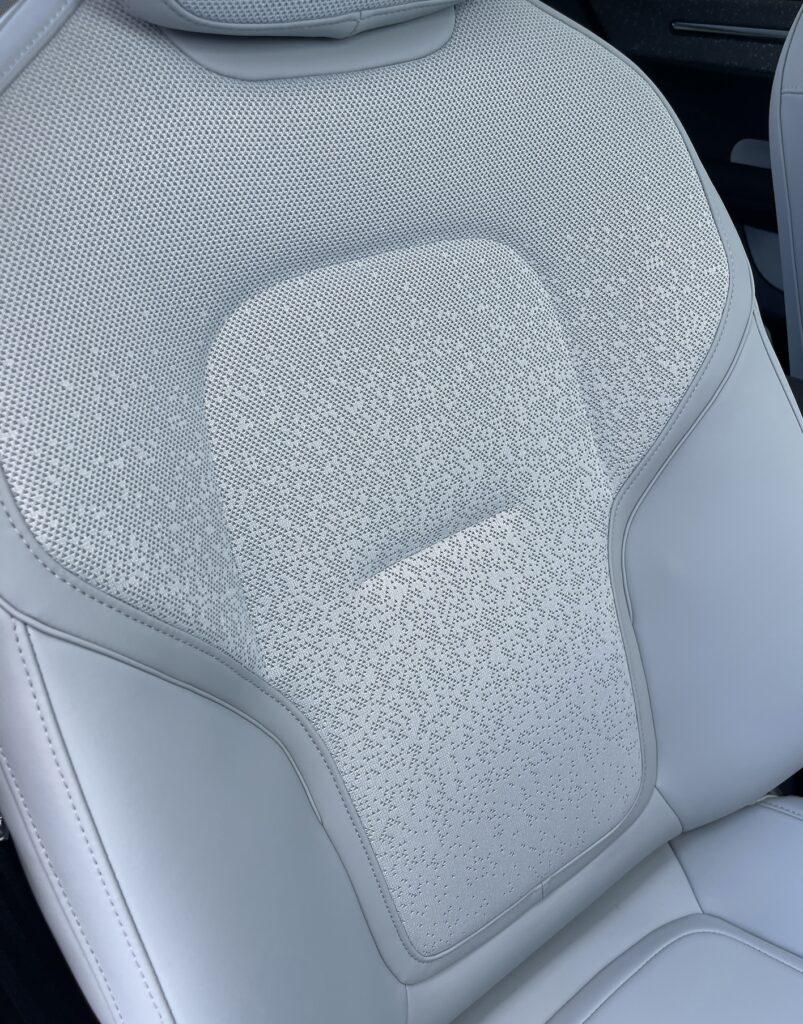
A combination of 3D knit and the synthetic leather “Nordico.” The 3D knit is a sustainable material that produces no waste, featuring a beautiful pattern resembling falling snow, created through a gradient design.
When I first saw the Polestar 2* at the 2019 Geneva Motor Show, I realized that the word “vegan” was being used in a vehicle design concept, marking what felt like the dawn of a new era in CMF.
It left a strong impression on me as an innovative moment when a luxury model clearly embraced sustainability, signaling a brand’s commitment to a new premium interior concept. This was evident in the use of synthetic leather instead of traditional animal-based leather, recycled wood trim, and other sustainable materials. It was a bold statement to the world, demonstrating a clear shift towards sustainability in high-end vehicles. Furthermore, a more modern, approachable, and even more refined sustainability design has been realized in the Volvo EX30.
For a global brand like Volvo, meeting international standards for new materials is no easy task. I have great respect for the way they boldly continue to push the boundaries of new expressions and textures, taking on these challenges with determination.
*Polestar 2: A luxury SUV first unveiled at the 2019 Geneva Motor Show. It also offered the option of leather seats with traceability, allowing the supply chain to be tracked from production to the final consumption or disposal stages.
The cohesive and forward-thinking CMF design of this vehicle is likely the result of the CMF team’s collaboration with the design department from an early stage in the development process, setting clear goals and working towards them together.
As material development with environmental considerations progresses, CMF is taking on an increasingly important role in the vehicle development process. Seeing the EX30 has only reinforced that belief for me.
Creating a vehicle where colors and materials eloquently tell the story of the model is a goal every CMF designer aspires to. However, in reality, there is often a disconnect between the design intent and the user’s perception.
Rather than relying on words, I felt that the EX30 is filled with wonderful elements that allow the story to be intuitively imagined the moment you see and step into the vehicle.
I personally believe that while the team responsible for this CMF may have faced various challenges during the development process, it must have also been a very rewarding and fulfilling experience for them.
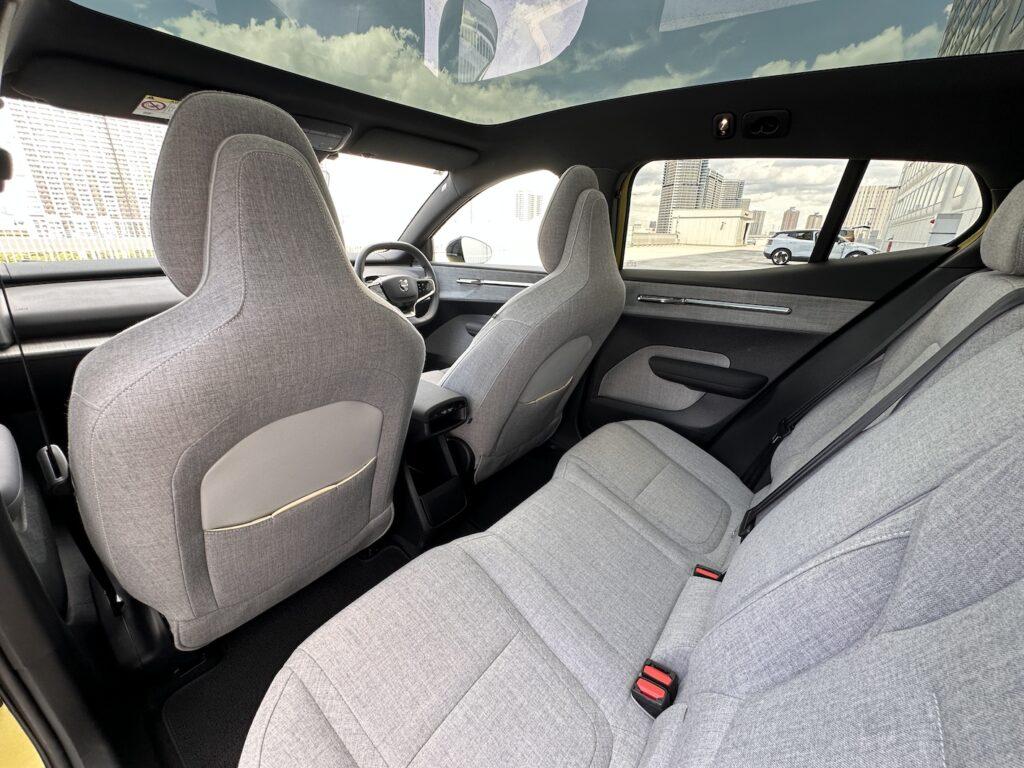

![by Car Styling [カースタイリング]](https://motor-fan.jp/wp-content/uploads/2025/04/carstyling-jp_logo.png)






